

Max Davies
2026 GWM Cannon Ultra review
6 Days Ago
After a taste in Tokyo, Mitsubishi has given us a drive of the all-electric eK X kei car on Australian roads – should it be sold here?
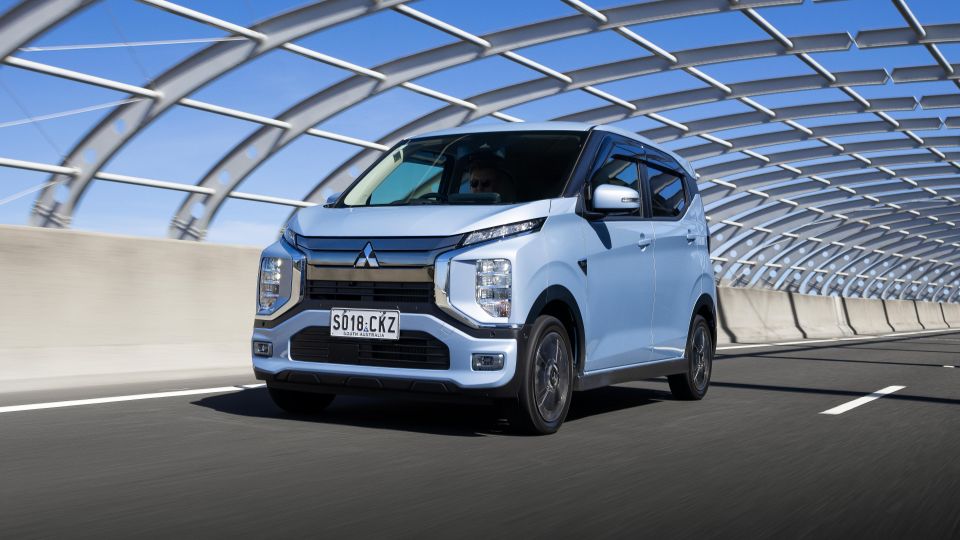
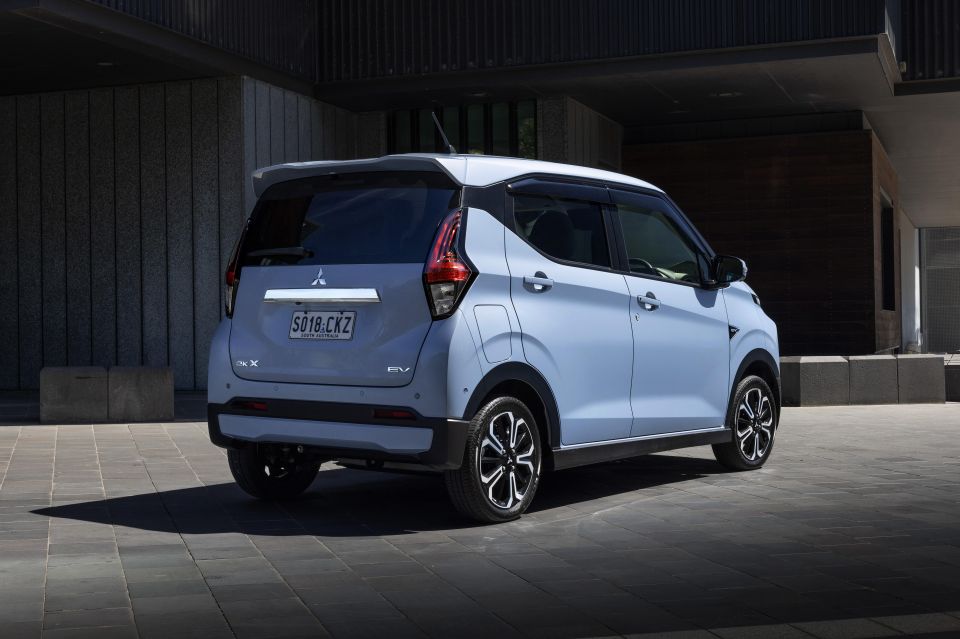

Marketplace Editor

Marketplace Editor


Marketplace Editor

Marketplace Editor
Where expert car reviews meet expert car buying – CarExpert gives you trusted advice, personalised service and real savings on your next new car.
The affordable end of the new car market is currently dominated by the Chinese brands, particularly in the electric vehicle (EV) space. Mitsubishi is looking to get in on the action in Australia.

While the majority of Australians gravitate towards diesel-guzzling dual-cab utes and family friendly SUVs, there’s still hot competition for buyers looking to enter the EV ownership club for minimal coin.
BYD, GWM and MG – noticing a pattern here – are duking it out against each other with sub-$40,000 compact electric vehicles. While the volume of these cheaper EVs is nowhere near Tesla’s scale, the title of “Australia’s cheapest EV” still seems to be desirable enough to fight about.
One of the few legacy brands that hasn’t forgotten about its budget-conscious roots is Mitsubishi, which has been selling the eK X kei-class electric car for some time in its home market of Japan.
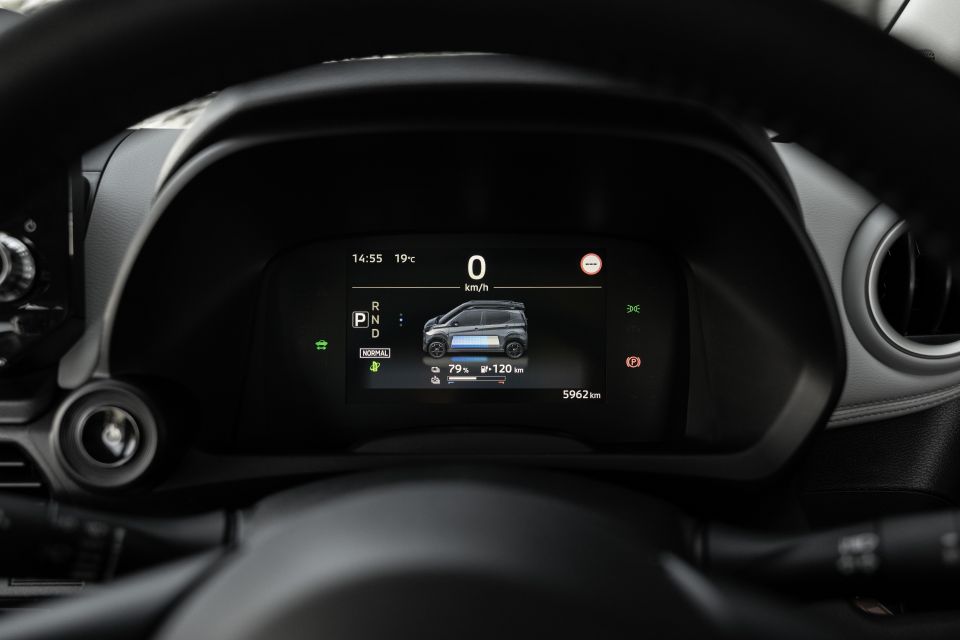
We tested it on Japanese roads over a year ago, but such is the interest in potentially entering the Australian market the brand has flown one out for evaluation testing – and they even allowed us a quick stint on local public roads.
Has it got what it takes to win over Australian buyers looking for a cheap, city-sized EV? Or is this best left for the bustling streets of Tokyo?
Mitsubishi Australia hasn’t indicated what the eK X might cost if it ever makes it Down Under, but in the Japanese domestic market it’s priced from 2,398,000 yen – or the equivalent of AUD $23,435.
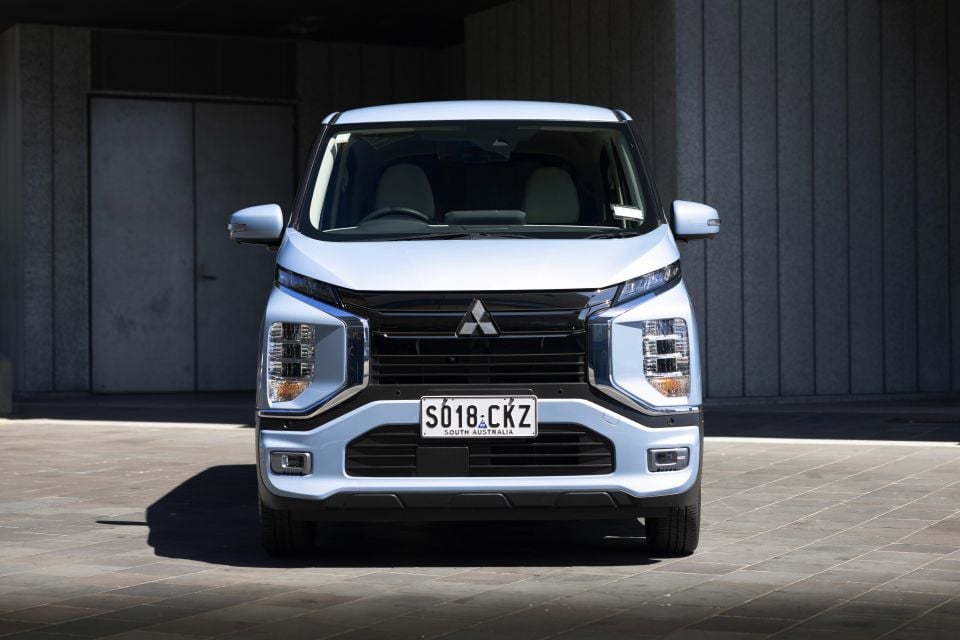
The high-spec model we drove with all the kit is more like 2,932,600 yen (AUD $28,660), but even still if the eK X was to be sold here for that kind of money it would become the cheapest electric vehicle on sale in Australia.
Currently, the GWM Ora is priced from $35,990 drive-away before incentives. It’s a much larger car with more driving range, and comes from a challenger brand with production sourced from China.
It’s worth noting that some brands have offered similar products overseas, like the Volkswagen e-Up! and Skoda Citigo-e iV. Mitsubishi’s own i-MiEV was probably well ahead of its time, too, given its conceptual similarity to the eK X.
Buy your new car without the stress. It's fast, simple and completely free.

Great service from Travis and team, second time I have used this business would not hesitate to recommend them to anyone
Craig C.
Purchased a Ford Ranger in Sunshine Coast, QLD
CarExpert helped Craig save $7,224 on his Ford Ranger, now let us save you on your next new car.
Get your BEST priceThis was my first experience with a kei car, and I was immediately impressed with the excellent maximisation of space in such a compact package, as well as the available technology in such an affordable car.
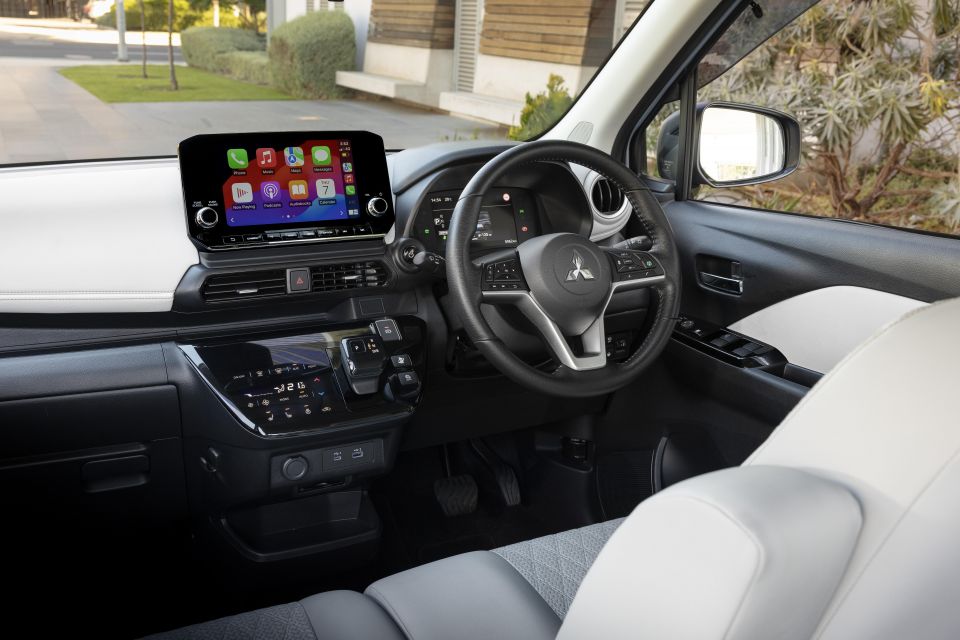
Measuring just 3395mm long, 1475mm wide and 1655mm tall, the eK X is shorter in length and narrower in width than even a Kia Picanto, but seems to offer better space for passengers thanks to its taller height.
It’s a very open-plan interior concept, with as much floor space as possible and the first two rows being effectively all seats with no real centre console – though front occupants get a neat folding armrest that’s nicely padded.
At around 6’1 I did not feel like a cartoon giant squeezing into a little car, quite the opposite actually. The tall roof and minimalist front cabin meant that it’s deceptively airy and spacious inside.
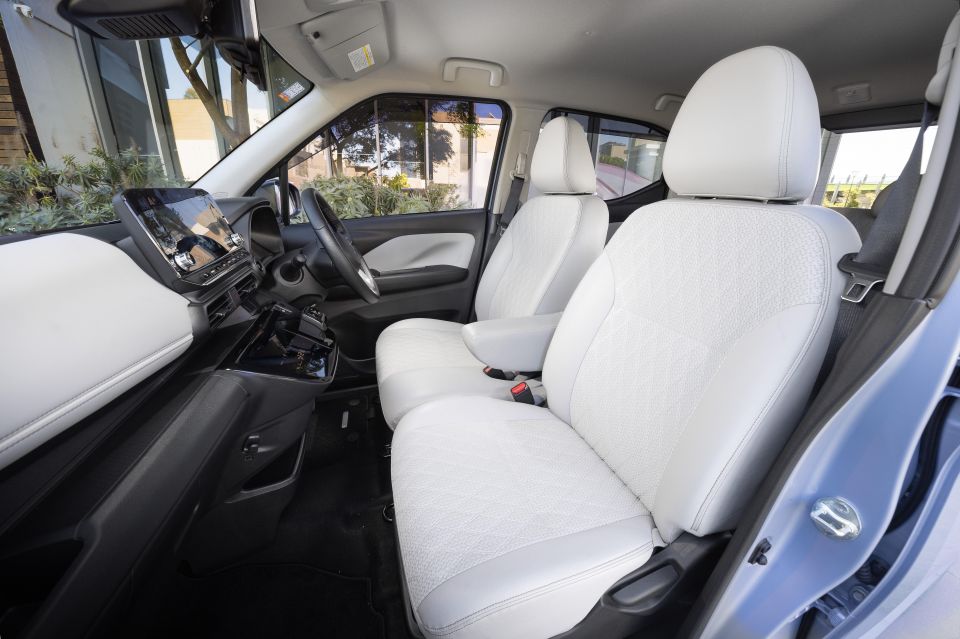
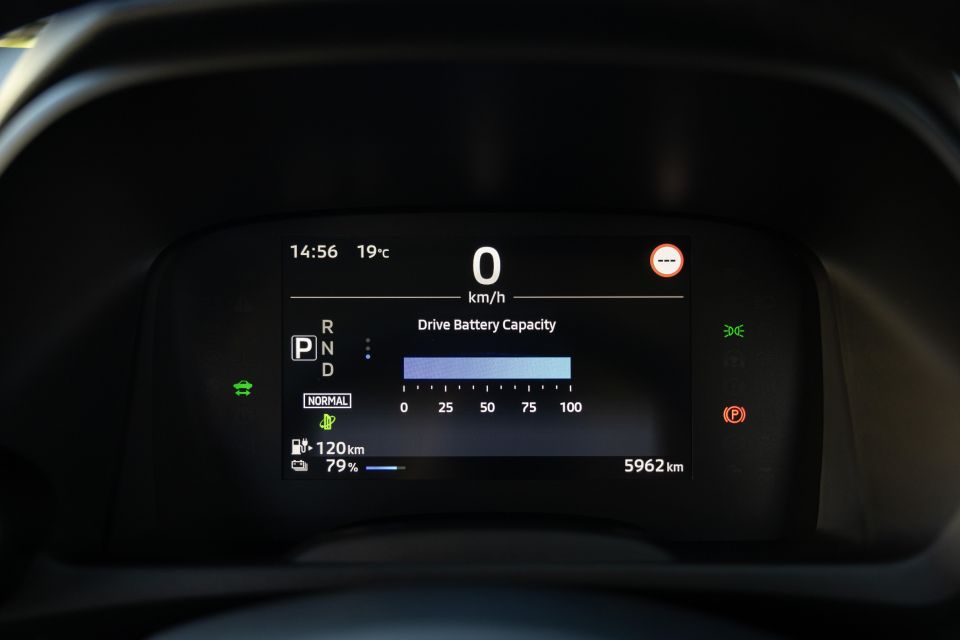
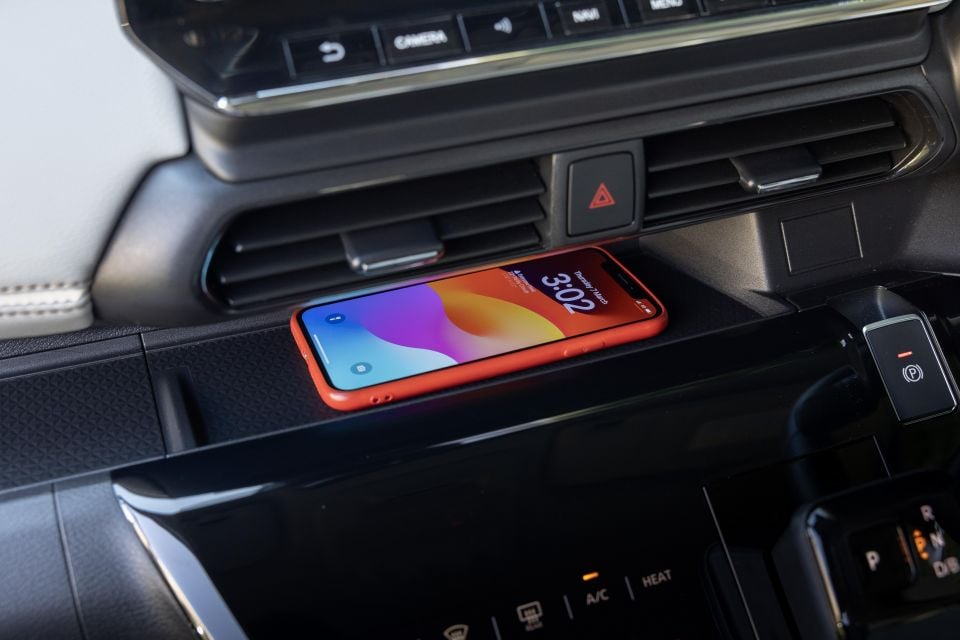

Plus, you’re faced with familiar switchgear and tech gadgetry from models higher up in the Mitsubishi range – dare I say it, it feels more modern and tech-laden than the current ASX or Eclipse Cross in places.
Our test car’s white interior with quilted leatherette might not be to all tastes, but I’m all for options beyond just boring black.
There’s a small configurable digital instrument cluster behind the steering wheel with plenty of widgets and layouts to ensure you have the information you want, and sitting atop the dashboard is the familiar 9.0-inch touchscreen from Mitsubishi and Nissan models like the Outlander and Triton.
Everything is within easy reach, and the tactile multifunction controls on the steering wheel are good too. Really, it’s the same tiller you’ll find in many Nissan products, though the rough leather trim isn’t quite as upmarket.
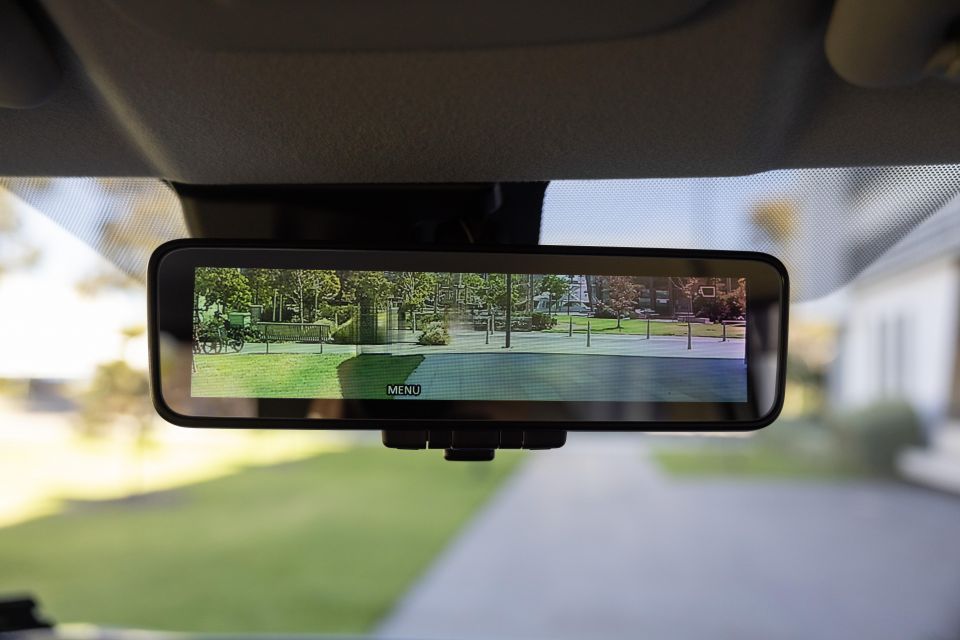
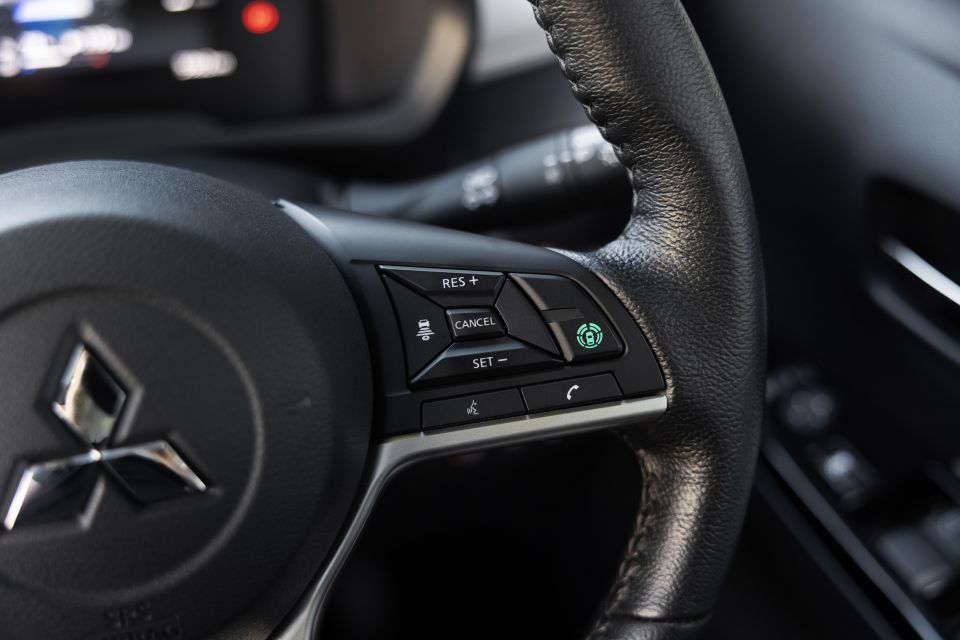

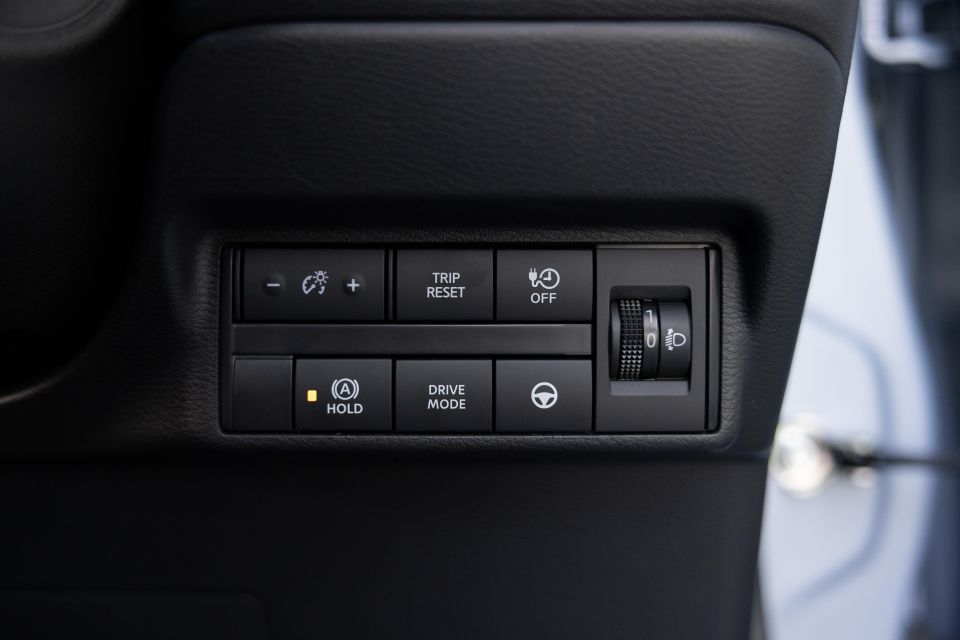
Below the touchscreen you’ll find vents and touch capacitive controls for the climate controls, a slot for your phone that extends ahead of the front passenger, a stubby shift-by-wire selector with buttons for the one-pedal drive mode, as well as auto park assist – remember, our Japan-spec test car came fully loaded.
The glossy finish over the touch controls would quickly attract finger prints, but it’s otherwise fairly easy to use and clearly labeled. You even get a digital rear mirror in the spec tested.
There’s good adjustment in the driver’s seat and steering wheel to get comfortable, even if you’re taller than average like myself.
Visibility out all angles is excellent thanks to the tall body and plentiful glasshouse, and there’s decent storage in the dash-mounted cupholders and various open cubbies for your odds and ends.
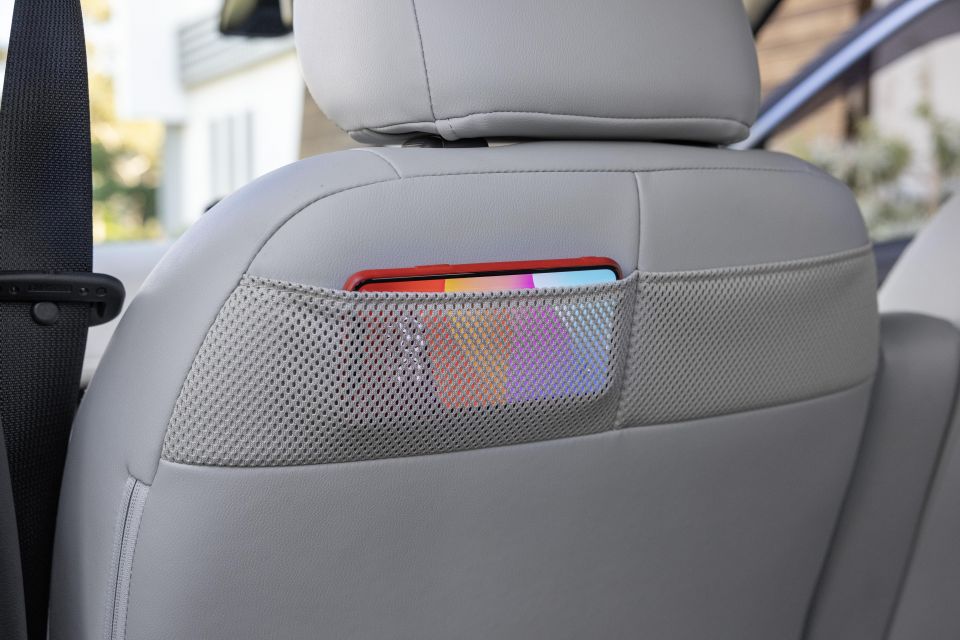
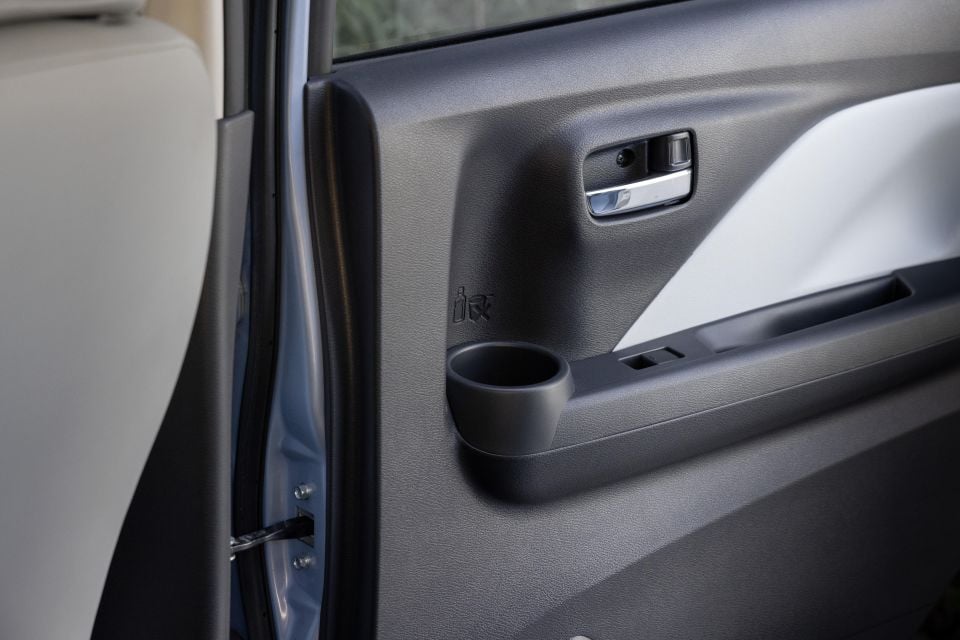
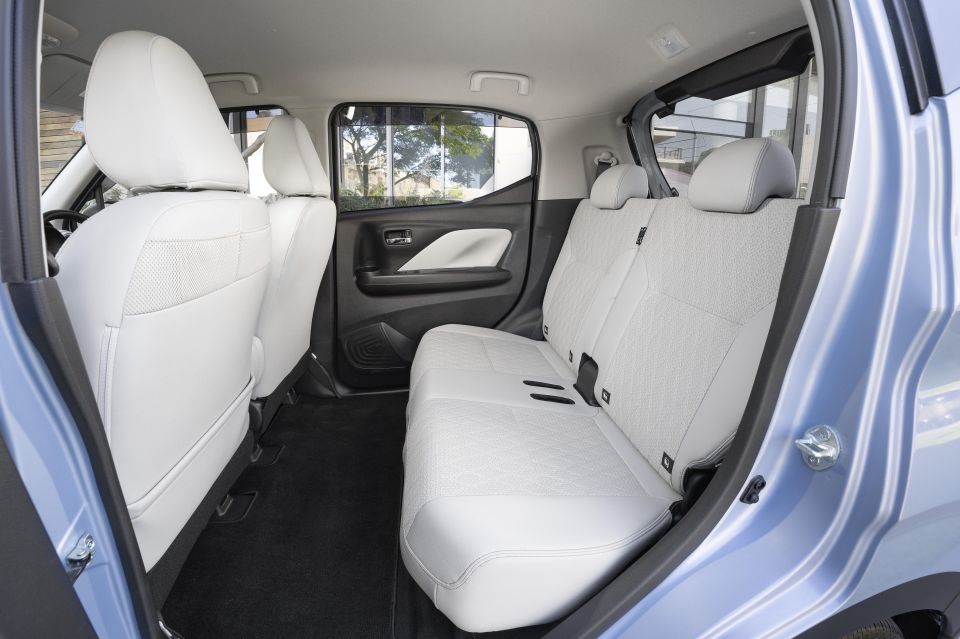
Perhaps more impressive is the rear accommodation. With a sliding two-seat rear bench, the eK X offers almost palatial second-row space to the point where a lot of larger cars should be ashamed.
I easily had enough space for my legs and feet behind my own driving position, and headroom in spades thanks to the tall and boxy roofline.
There are other neat touches too, like netted pockets for your phone or wallet on the back of the front passenger seat, cupholders nestled in the doors, as well as ISOFIX anchors on the rear seats with top tethers.
You get a cupholder in each door ahead of the armrest too. Truthfully, this transcends traditional segments in terms of rear seat space.
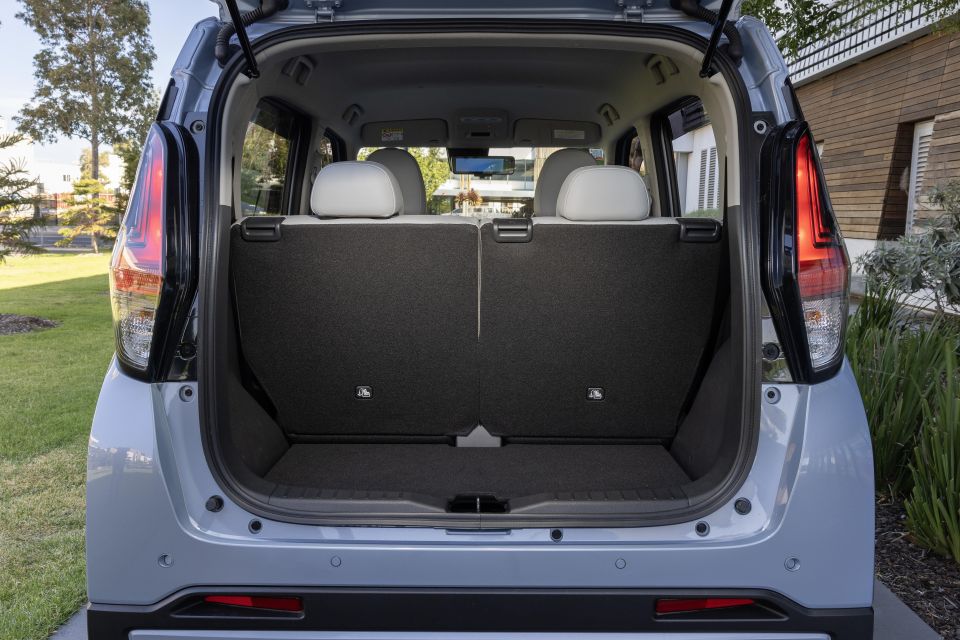
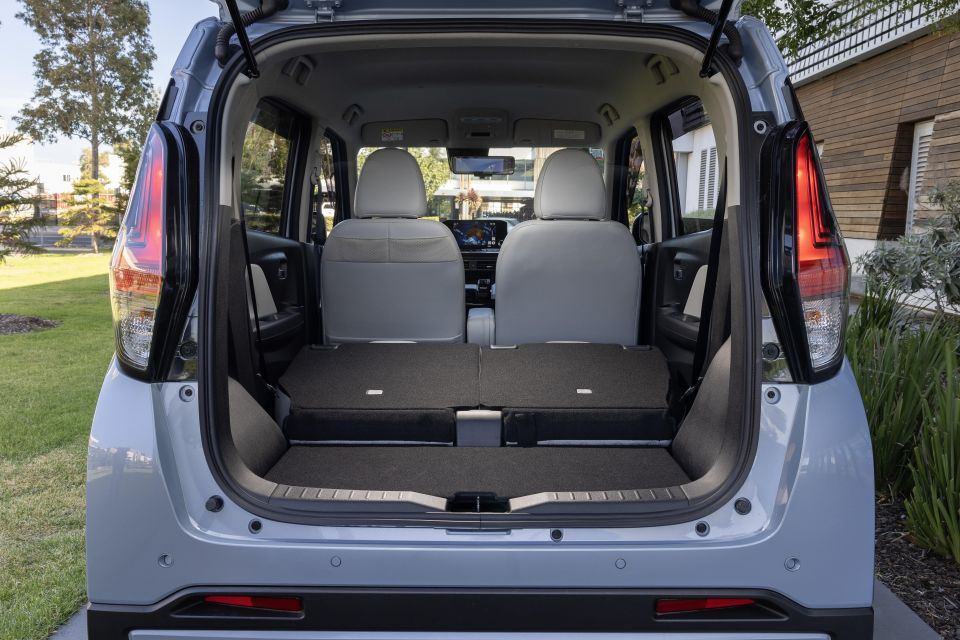
All that second-row adjustability and space means the boot isn’t quite as large.
You can slide the rear seats forward to open up more capacity, and they also fold forward – though it leaves a noticeable hump from the boot floor to the seat backs.
Keep in mind this is a kei-class car is designed for city use rather than loading up for family road trips, but a lightish grocery run or a few small bags is as good as it gets with all seats in use.
The Mitsubishi eK X is powered by a little electric motor on the front axle.
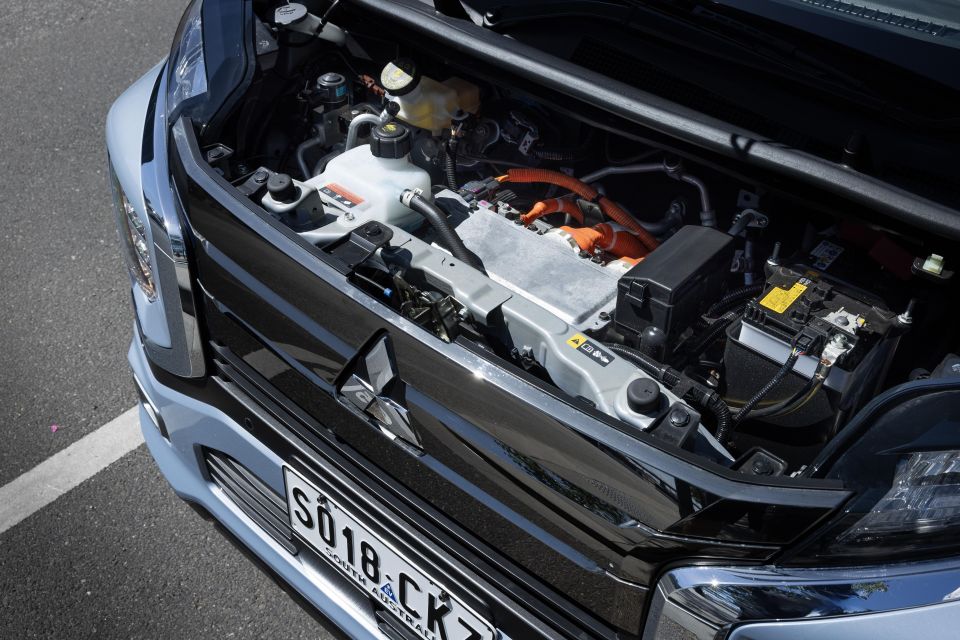
| Model | Mitsubishi eK X |
|---|---|
| Electric motor setup | Single electric motor, front |
| Total system power | 47kW (2302-10,455rpm) |
| Total system torque | 195Nm (0-2302rpm) |
| Driven wheels | Front-wheel drive |
| Battery | 20kWh li-ion |
| Weight | 1060-1080kg |
| Claimed range | 180km (WLTC) |
| Energy consumption (claimed) | 12.4kWh/100km (WLTC) |
Mitsubishi’s media release for the Japanese market doesn’t detail charging specifications, though the eK X offers both Type 1 and CHAdeMo ports for AC and DC charging.
According to JDM specifications, the eK X will take around 8 hours to fully charge via AC200V/14.5A ‘regular’ charging, or 40 minutes to 80 per cent using ‘quick’ charging.
We were afforded a short stint behind the wheel of the eK X under supervision of a Mitsubishi Australia representative.
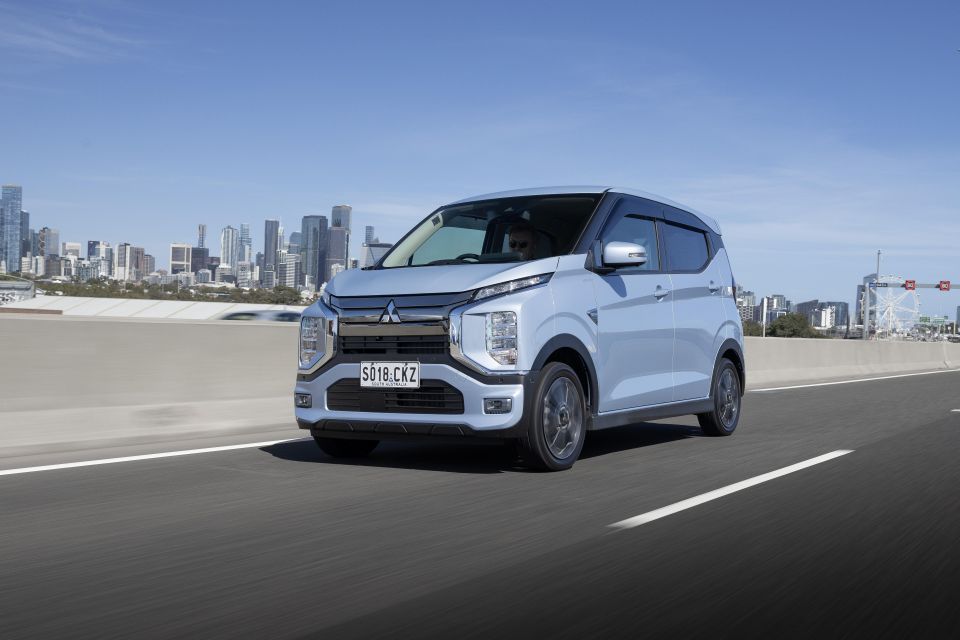
In the hour or so-long period we had in the driver’s seat, we drove in and around the northern suburbs of Melbourne, including the Keilor Park business district, as well as on the high-speed Metropolitan Ring Road.
The eK X may only quote measly outputs on paper, but its compact size and decent torque means it gets along fine if you’re not expecting something to really zing towards the speed limit.
It’s smooth, refined and linear in its acceleration response, and being electric it’s pretty quiet too, save for the high-pitched whirring of the e-motor under load.
Keep in mind that 195Nm from rest is as much as some turbocharged mainstream hatchbacks, and this thing weighs a smidgen over 1.0 tonne.
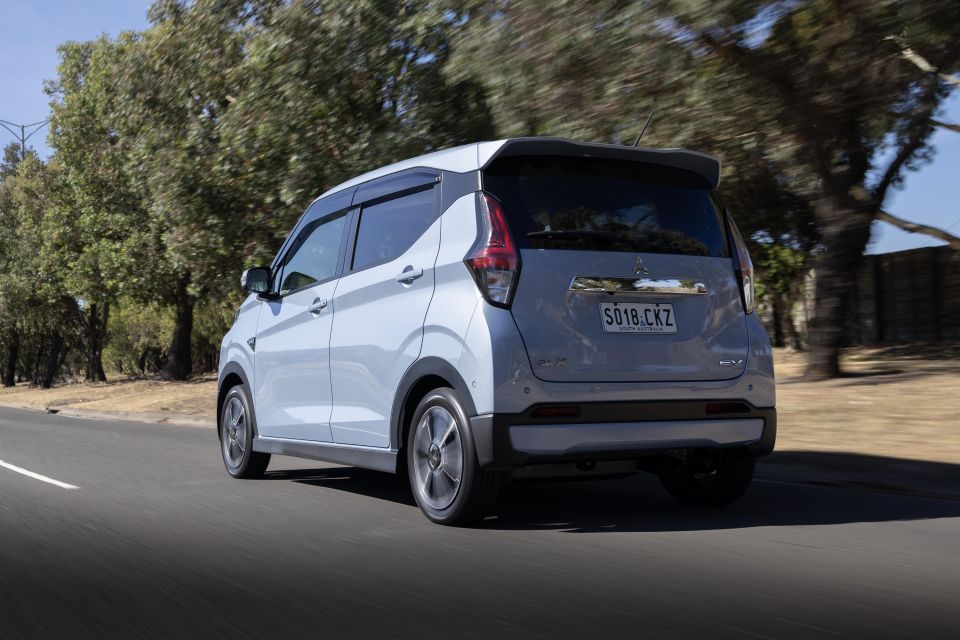
The Mitsubishi eK X feels well suited to urban and city environments, where its torquey electric motor offers effortless performance and its teeny dimensions don’t feel out of place.
Its tall body means you can feel the body lean in turns, but the floor-mounted battery pack keeps the centre of gravity lower down and the accurate and nicely calibrated driver controls makes this feel like a bigger, more substantial car.
Punch it off the line and it gets up to 40-60km/h quickly (almost), and it certainly responds with more enthusiasm and less noise than something like a Toyota Yaris Hybrid, let alone a naturally aspirated Kia Picanto.
The pedal button next to the shifter activates a pseudo one-pedal driving mode, but much like the Outlander Plug-in Hybrid EV and the likes of Nissan e-Power hybrids, it slows the vehicle down to around 10-15km/h and then tapers regen off to allow the driver to regain control.
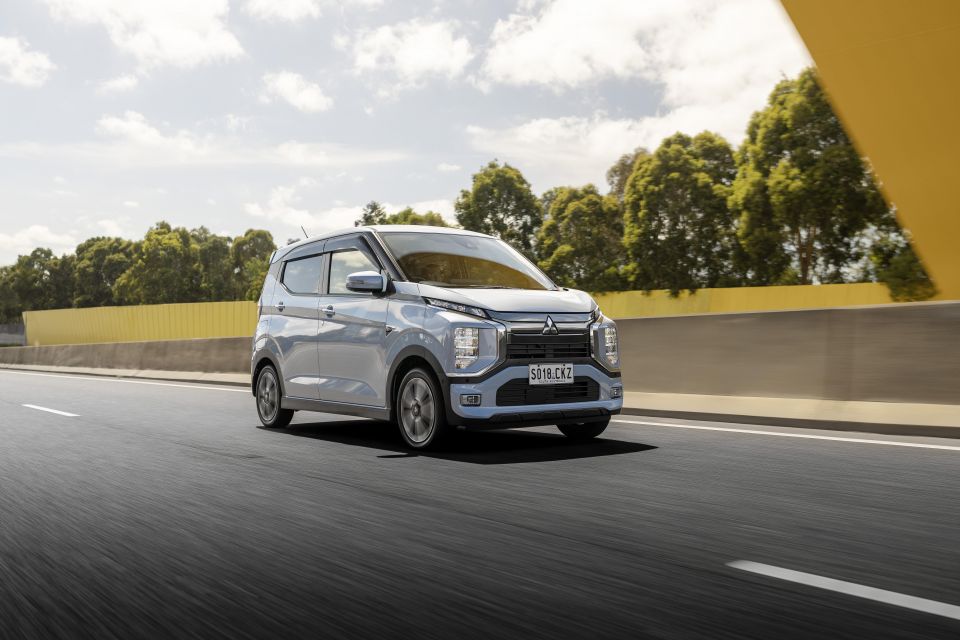
Don’t think this little electric box on wheels can’t handle a highway run either, because it’s capable.
The high-spec car we had on test was decked out with Mitsubishi’s Mi-Pilot highway assistant, the same tech available on the Outlander as well as the Nissan Qashqai and X-Trail (known as ProPilot in Nissan’s range).
Adaptive cruise control and lane centring are activated by a single button push on the steering wheel, and the eK X will happily cruise along at 100km/h alongside much larger cars while staying centred in its lane.
It remained surprisingly planted and stable at freeway speeds, and the ride wasn’t too bad either. That said, its kei-class roots start to emerge as the speeds rise, with plenty of road and wind noise permeating the cabin.
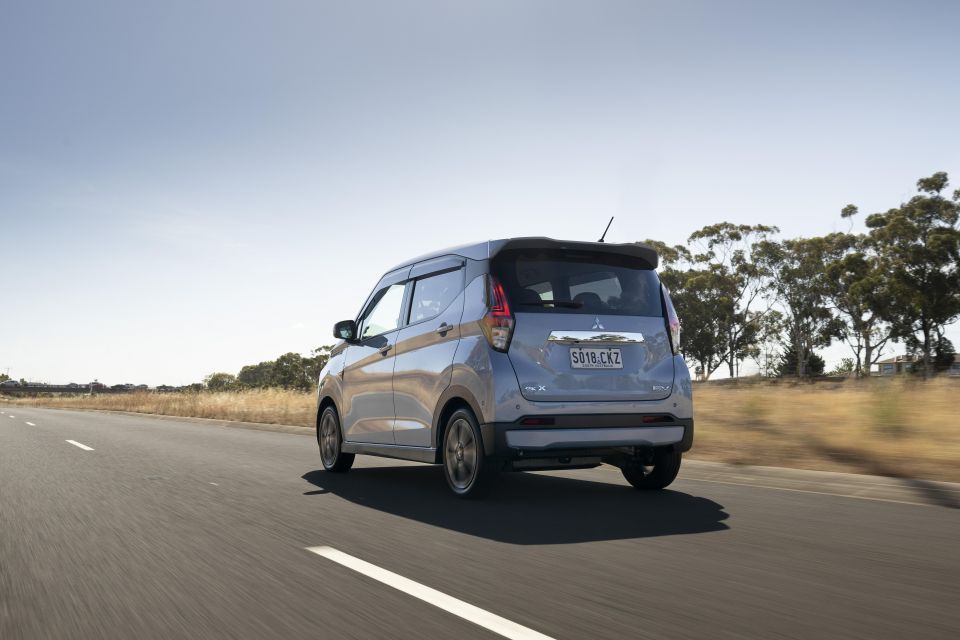
Where expert car reviews meet expert car buying – CarExpert gives you trusted advice, personalised service and real savings on your next new car.
Keep in mind there’s not a whole lot of range on offer from the small 20kWh battery pack for touring stints either. Mitsubishi quotes 180km per charge on the Japanese WLTC test cycle, though a pretty much fully charged car was showing closer to 160km when we first set off.
But remembering the premise of a kei car, the freeway stuff should only be occasional anyway, and the attainable price means this is a well-equipped zero-emissions second car for putting around the city with enough in the figurative tank for the odd highway jaunt, if needed.
Two grades are available in Japan.
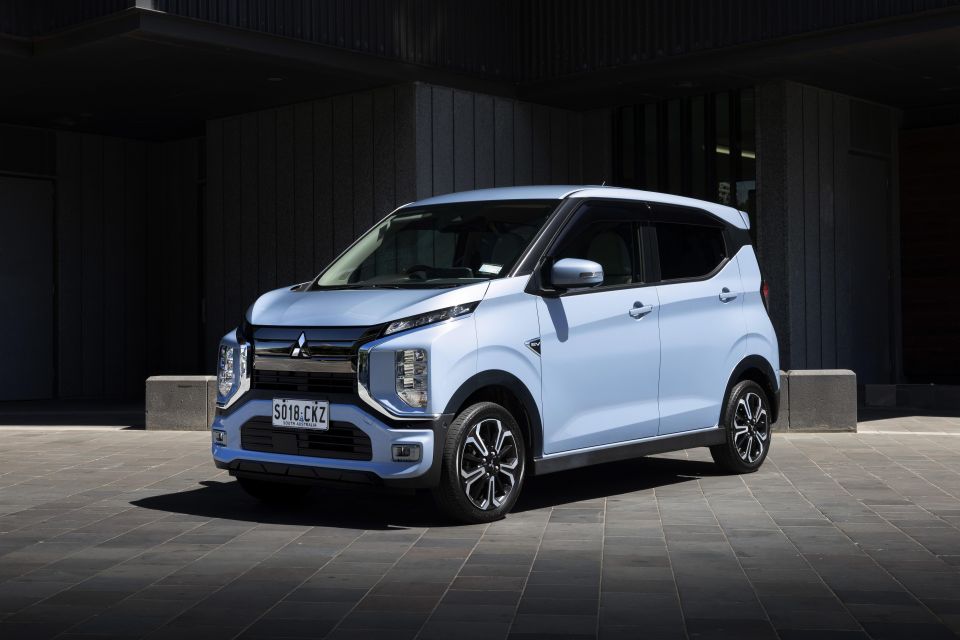
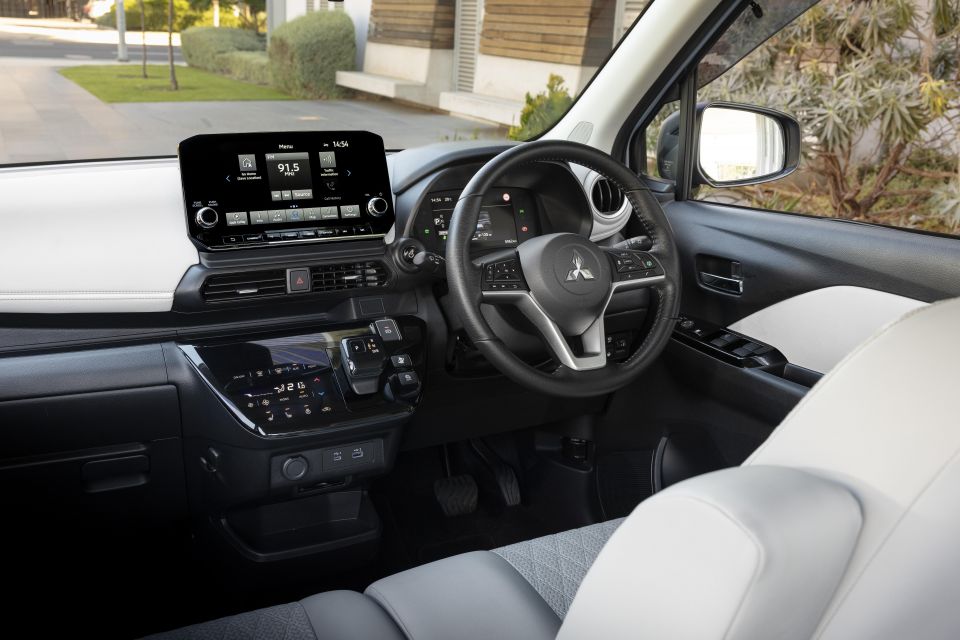


eK X P highlights:
eK X G adds:
Being Japan-only at this stage, there’s no ANCAP or Euro NCAP safety data for the eK X.
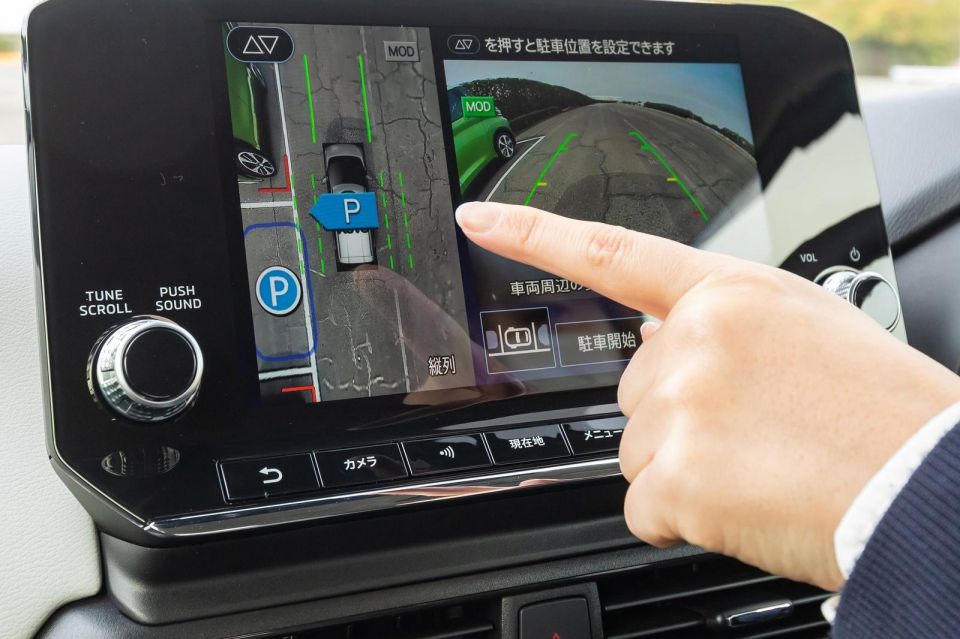
Standard safety kit in Japan includes:
You can also specify the eK X with the full Mi-Pilot suite which brings adaptive cruise control with lane keeping and lane centring assists, as well as a semi-autonomous parking assistant and surround cameras.
Given its tiny dimensions with limited crumple zones, one compromise of the eK X’s packaging is the unlikelihood of it achieving a five-star ANCAP safety rating.
It has a five-star rating from Japan’s NCAP crash test firm, but the lack of a central airbag and its narrow body mean it wouldn’t earn the same in Australia or Europe against the latest criteria.
If it were to be sold in Australia, the eK X would likely be covered by the brand’s 10-year, 200,000km warranty provided you service in accordance with the service schedule within Mitsubishi’s dealer network.

Mitsubishi Australia also covers the high-voltage drive battery in the Outlander Plug-in Hybrid for eight years or 160,000 kilometres – whichever comes first.
Given the eK X and Outlander PHEV both utilise 20kWh li-ion drive batteries, it wouldn’t be surprising if they were effectively the same units and covered by the same warranty if both were sold here.
Service pricing would be subject to the eK X’s release in Australia.
Buy your new car without the stress. It's fast, simple and completely free.

Great service from Travis and team, second time I have used this business would not hesitate to recommend them to anyone
Craig C.
Purchased a Ford Ranger in Sunshine Coast, QLD
CarExpert helped Craig save $7,224 on his Ford Ranger, now let us save you on your next new car.
Get your BEST priceThe Mitsubishi eK X presents a very specific solution for a very specific sub-section of the Australian new car market, but there could be some potential there.
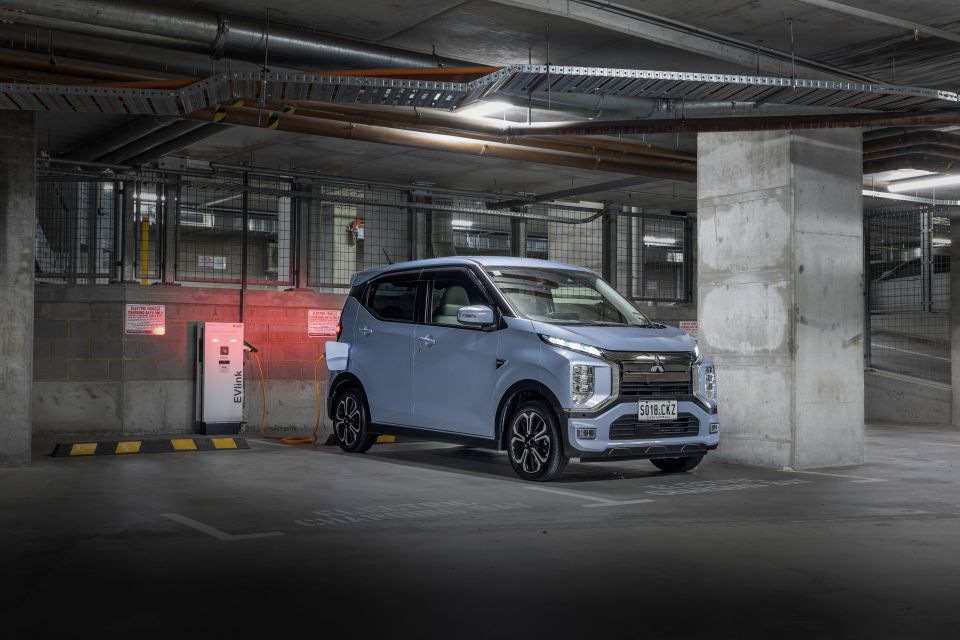
If it comes in at the right price, and some Australians could change their mindset to align with the more pragmatic approach of the Japanese and Europeans when it comes to size and packaging, something like the eK X could make an impact.
While EV prices are slowly coming down as the Chinese EV price war rages, a big barrier to purchase low- and zero-emissions vehicles is still pricing – plenty of people still can’t afford or want to buy a vehicle over $30,000.
Urbanites would be well served by something so easy to drive in town and space efficient, while emissions-conscious families needing a cheap runabout for errands and school runs likewise could get a lot of something like the eK X.
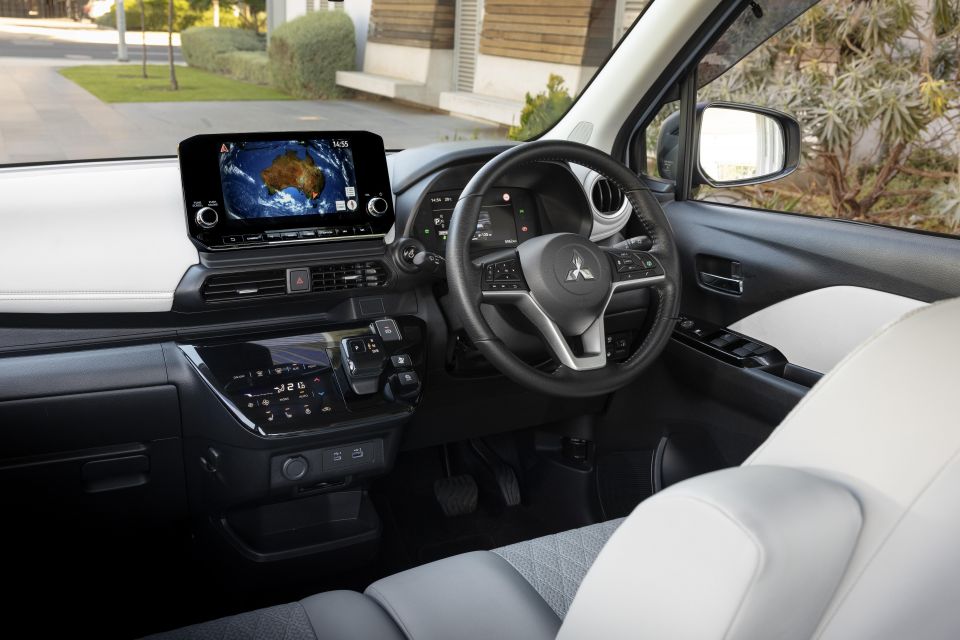
Those are very specific use cases for a country that still demands vehicles be capable of it all. A sub-five-star ANCAP rating would render the eK X unsuitable for council and government fleets, and the short range limits its appeal to anyone buying this as a primary vehicle needing the occasional longer trip.
The quirky looks may also polarise, but really price is the most critical factor. Anything above $30,000 and the little Mitsi is knocking on the door of the GWM Ora, BYD Dolphin and MG 4, and would likely be cast aside like the i-MiEV.
I’d still love to see it come here, especially if a future update brings about more range – fingers crossed!
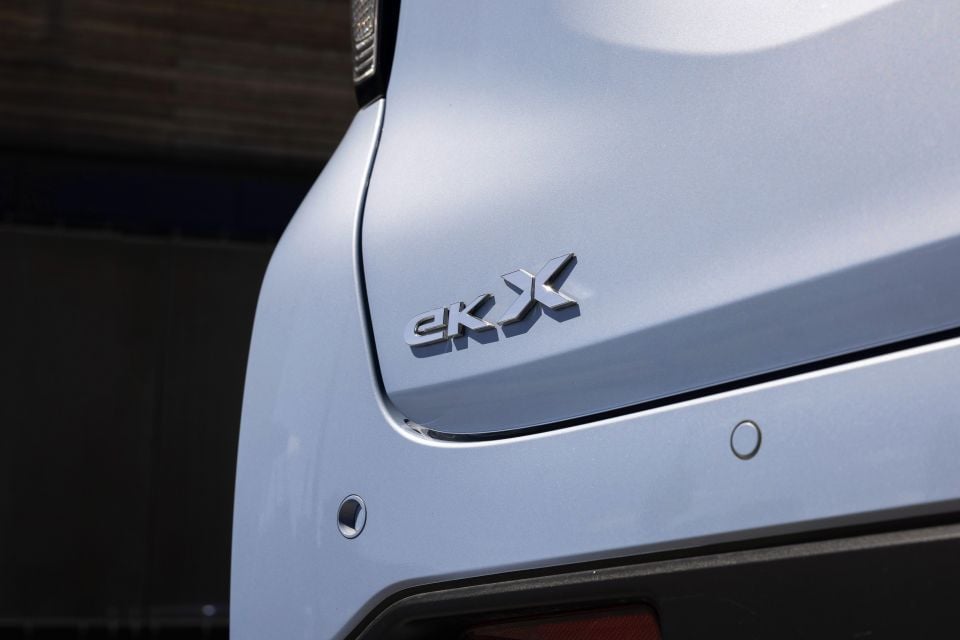
Click the images for the full gallery
Where expert car reviews meet expert car buying – CarExpert gives you trusted advice, personalised service and real savings on your next new car.
James is an automotive journalist based in Melbourne, Australia. Before joining CarExpert.com.au in 2020, James has worked at leading auto media outlets including Carsales and CarAdvice, as well as at Pulse agency for Ford Australia's communications team. In 2019 James made Mumbrella's 'Top 20 most prolific web authors in Australia' list after publishing 1,360 articles between March 1, 2018 and February 28, 2019 for CarAdvice. James is also an Ambassador for Drive Against Depression – an Australian charity whose mission is to support mental wellness through the freedom of driving and a shared love of cars.


Max Davies
6 Days Ago


Josh Nevett
4 Days Ago


Max Davies
4 Days Ago


Max Davies
3 Days Ago


Neil Briscoe
2 Days Ago


Max Davies
1 Day Ago